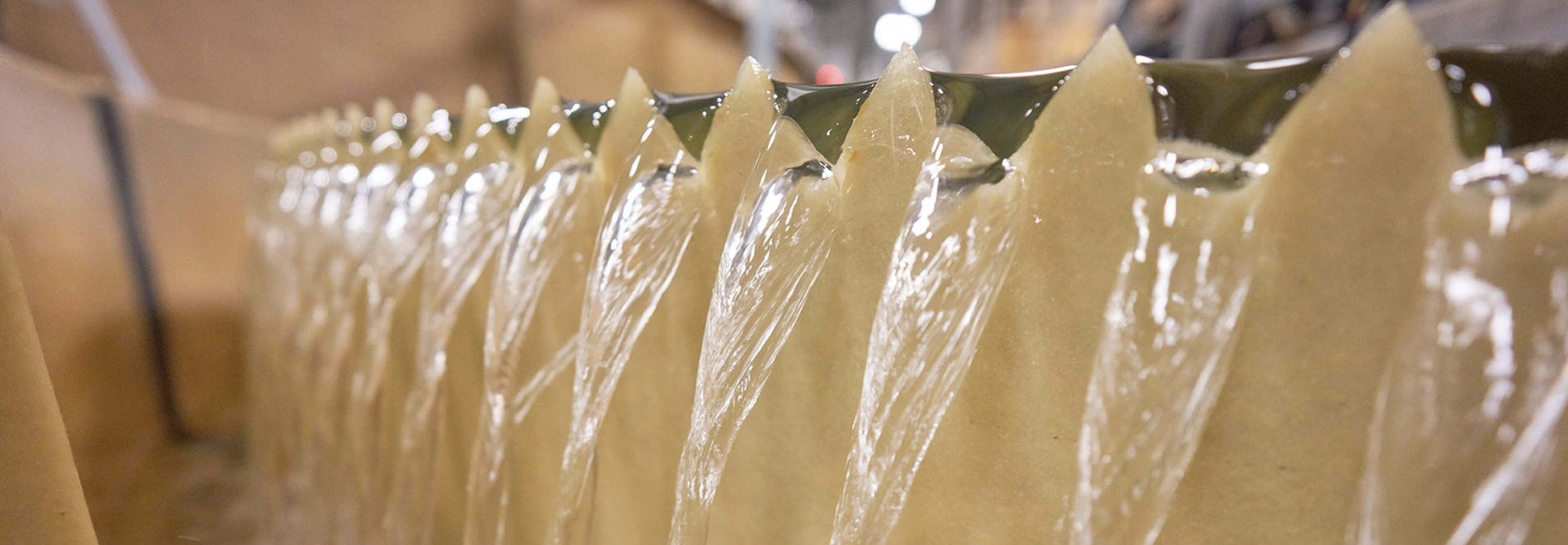3 Things You Should Know About AquaBounty's Water Usage in Pioneer, Ohio
At AquaBounty, we know just how vital water is. We all depend on this precious natural resource to survive – which is why it's up to each of us to do our part to conserve it. For this reason, we also know it's only natural for there to be questions about the impact AquaBounty's new land-based fish farm will have on the water in Pioneer, Ohio. We want to assure our neighbors in Williams County that we're committed to being good corporate citizens and stewards of the area's water. Here are three things you might not know about our new AquaBounty farm.

1. It's designed to conserve water and limit draw from the aquifer.
The beauty of AquaBounty's land-based fish farms, like the one being built in Pioneer, Ohio, is that we use innovative recirculating aquaculture system (RAS) technology, which is designed to efficiently use all resources such as oxygen, power – and especially water. In fact, we're able to recirculate 99.5% of the water we draw into our farms every minute. And with the new Pioneer farm, we'll have a state-of-the-art water/wastewater treatment facility, which will allow us to reuse a significant portion of what would otherwise be wastewater. So, while we expect to use, on average, 4.3 million gallons of new water each day once we are at full operating capacity, the water we pump on day one from our deep well system will actually stay in our facility for approximately six days, being recycled and filtered to be reused in our fish tanks multiple times before being filtered and treated once more, and then returned to the St. Joseph River.
What's more, given the increasing global demand for land-based seafood production facilities, scientists and engineers are working toward developments that would one day allow us to be able to safely recirculate 100% of the water in our farm. AquaBounty is always monitoring developments in RAS technology that will help us to reduce our water intake/usage, and we will incorporate proven technology when appropriate.

2. It's the result of 30+ years of land-based farming expertise and multiple comprehensive water usage studies.
The decision to build our advanced land-based fish farm in Pioneer, Ohio didn't happen overnight. You might say the last three decades have led up to it, since all the research, findings, and learnings we've garnered to date have gone into creating and optimizing this new farm.
From a water usage standpoint, we first undertook a rigorous site selection process that included evaluating sufficient water quality and quantity along with other criteria. Only after our initial assessment concluded that the aquifer was capable of providing far more water than we would ever need did we pursue the venture in Williams County.
Still, we didn't stop there. More recently, we've engaged a third party to perform a comprehensive study of the water resources in the area as it relates to our impact on local wells and Lake Pioneer. To ensure we weren't underestimating our impact, we decided to use an overly conservative prediction model as an extra margin of safety. This means that – even though the study identified a small possibility that our water withdrawal could have an impact – it is far more likely that the model has over predicted the potential effects. But in taking this route, we've been able to design added precautions that will help prevent and monitor any potential impact to shallow wells or water levels close to the proposed well field.

3. Several measures will be put into place to prevent, monitor and resolve potential impact to the area's water.
AquaBounty is committed to monitoring the effects of our groundwater pumping on area wells and Lake Pioneer and Merry Lake. To err on the side of caution, a groundwater and surface water monitoring program will be developed prior to commencement of operations at our facility so we can continuously evaluate water levels before and during the life of our operation.
And because we know the importance of being a good neighbor, if there is a material impact to a well within the geographic area of potential impact defined by ODNR, following the process in the ODNR water use permit and regulations, we will fix any material problems caused by our well operations, should one arise. Whether that means providing an interim alternate water supply, lowering an individual's well pump (if feasible), or deepening the well to ensure it has continuing access to the aquifer, we'll take the proper steps to make it right, in compliance with the State of Ohio regulations.